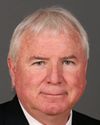Thank you, Mr. Chair. I would like to welcome our witnesses, whom we have seen a lot of on Parliament Hill lately, including at the Standing Committee on Public Accounts and the Standing Committee on Official Languages, where I saw Mr. Semianiw.
You are here today to help us determine whether, as far as the mission in Afghanistan is concerned, Canadian Forces are appropriately prepared when they return from their deployment back to their families, and whether they are receiving adequate health services, and more particularly treatment for mental health disorders.
General Jaeger, you talked about extreme shocks. Can you please explain to me what that is all about?
I don't mind if it is in English.



